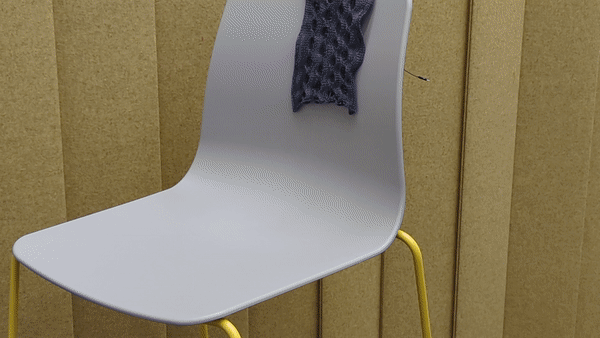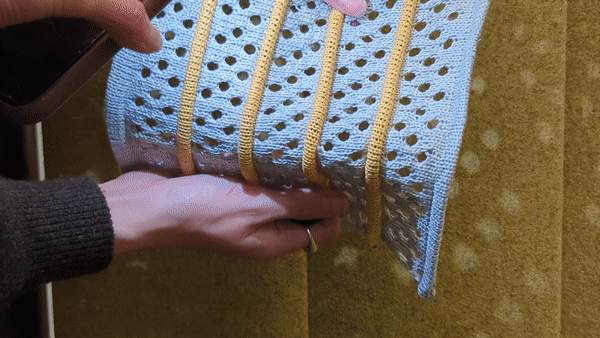MIT
Computing Fabrics, Spring 2022
Instructor: Prof. Yoel Fink
Collaborator: Emi Hughes
Computing Fabrics, Spring 2022
Instructor: Prof. Yoel Fink
Collaborator: Emi Hughes
This project focused on the development of adaptable fabrics made with conductive fiber that have capacitive sensing and/or temperature sensing capabilities. These fabrics can be used in a variety of applications, including personal devices, furniture upholstery, and interior architecture. The goal is to create fabrics that can be used on multiple scales and in a variety of settings.



A conductive fiber with capacitive sensing or temperature sensing capabilities is threaded into a jersey cord for protection. Once the conductive fiber has been securely encased in the jersey cord, it is ready to be knitted together with other yarns to create the desired fabric. The jersey cord serves to protect the conductive fiber and helps to ensure that it functions properly within the finished fabric.
Three different iterations of a sensing and messaging system using the Espressif esp32 and WhatsApp's API have been developed for use in personal devices, furniture, and interior architecture.
Iteration 1: Personal Device
Machine knit using two capacitive sensing conductive fiber, bamboo fiber, merino wool, reprieve (recycled polyester)
Users can send predefined messages to recipients through personalized gestures, such as a single tap, double tap, left swipe, right swipe, etc. This is achieved through the use of capacitive sensing conductive fiber.

Left Swipe

Right Swipe

Single Tap
Iteration 2: Furniture Upholstery

detecting presence through thermistor fiber

thermistor test
Iteration 3: Interior Architecture

Knit as temperature sensing screen

Shadow Test
early prototypes

hovering vs touching

single tap vs double tap

left swipe vs right swipe
Handknit prototype using one capacitive fiber, and polyester yarn